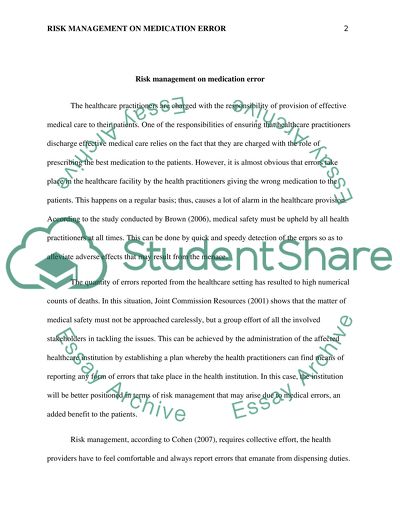Cite this document
(“Risk management Essay Example | Topics and Well Written Essays - 2250 words”, n.d.)
Retrieved from https://studentshare.org/other/1396770-risk-management
Retrieved from https://studentshare.org/other/1396770-risk-management
(Risk Management Essay Example | Topics and Well Written Essays - 2250 Words)
https://studentshare.org/other/1396770-risk-management.
https://studentshare.org/other/1396770-risk-management.
“Risk Management Essay Example | Topics and Well Written Essays - 2250 Words”, n.d. https://studentshare.org/other/1396770-risk-management.


